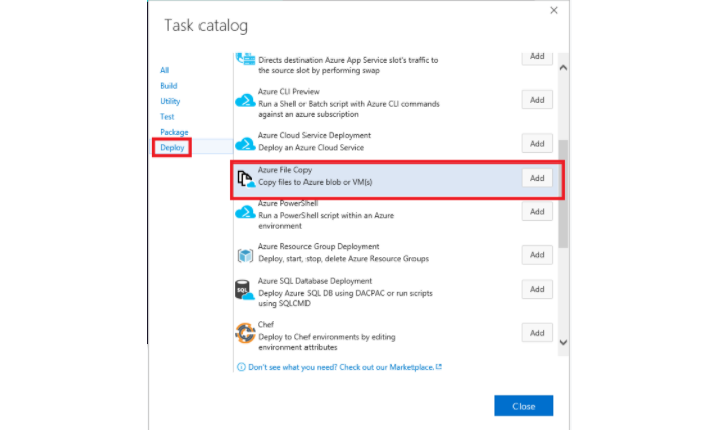Home
/ IT & Computer Science / AWS / Microsoft Future Ready: DevOps Development, Implementation and Azure Automation / Azure Resource Manager Templates and Visual Studio
This article is from the free online
Microsoft Future Ready: DevOps Development, Implementation and Azure Automation


Reach your personal and professional goals
Unlock access to hundreds of expert online courses and degrees from top universities and educators to gain accredited qualifications and professional CV-building certificates.
Join over 18 million learners to launch, switch or build upon your career, all at your own pace, across a wide range of topic areas.

 4. Add the new build steps to the build definition by selecting the Add build step button. 5. Choose Deploy > Azure File Copy task > Add:
4. Add the new build steps to the build definition by selecting the Add build step button. 5. Choose Deploy > Azure File Copy task > Add: 6. Select the Azure Resource Group Deployment task > Add. 7. Select Close the Task Catalog:
6. Select the Azure Resource Group Deployment task > Add. 7. Select Close the Task Catalog: 8. Choose the Azure Resource Group Deployment build step and fill in the values:
8. Choose the Azure Resource Group Deployment build step and fill in the values: 9. Override Template Parameter code:
9. Override Template Parameter code: 




